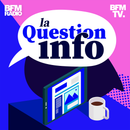Friends finishing their Christmas dinner at the hospital after eating one of the “Secret Santa” gifts: candies with THC, the psychoactive compound present in cannabis, and H4CBD, a derivative of CBD. “I saw lights and I said to myself: ‘It’s over, I won’t see my children anymore,’” one of the participants told “Parisien.”
In France, the consumption of CBD products is legal. Cannabidiol, also called “wellness” hemp, is a substance naturally present in this plant. But the big difference with so-called “recreational” cannabis is that CBD does not have any psychotropic effects. Therefore, these products are free for sale.
On the other hand, if CBD is not a narcotic product, Health Insurance warns of its risks of interactions and its adverse effects. A warning shared by Anne Batisse, addiction monitoring pharmacist at Fernand-Widal Hospital (AP-HP).
“Nothing is risk-free,” he points out to BFMTV.com. “CBD is a substance that in high doses can present risks with side effects, such as drowsiness, digestive disorders or psychiatric effects.”
Not to mention that it is prohibited to drive after consuming products containing CBD, as Servicio Público reminds us. Because, although sometimes they are in small quantities, “they always also contain a little THC,” says Inserm.
“What makes the poison is the dose”
And that’s the problem, like in “Secret Santa,” it went wrong. THC (or tetrahydrocannabinol) is the main psychoactive molecule in cannabis, making it a narcotic. And its sale and consumption is prohibited. However, products containing CBD with a THC content of 0.3% or less are still permitted.
In “Secret Santa” gummies, the THC content did not exceed this 0.3% threshold. But these candies, being especially large (more than 6 g), each contained 27 mg of THC. A very large dose: the equivalent of three slices of space cake.
For Nicolas Authier, a psychiatrist specializing in pharmacology and addictions at the Clermont-Ferrand University Hospital, this 0.3% threshold does not mean much. “It all depends on the amount of product consumed,” he warns for BFMTV.com.
Therefore, ingesting several candies throughout the day could expose the consumer to high levels of THC. And according to him, 4 or 5 mg of THC is enough to feel the effects. He denounces “a legal alternative to illicit joint.”
“This threshold is a trap. What counts is not the 0.3%, but the number of mg ingested.”
“What produces the poison is the dose, not the percentage.”
“The guinea pig is the consumer”
As for H4CBD, the CBD derivative found in “Secret Santa” candies, it is a little-known, if at all, synthetic cannabinoid. “We cannot conclude, based on current scientific data, whether this cannabidiol derivative has psychoactive effects or not,” asks Anne Batisse, also director of the Center for Addiction Monitoring in Paris.
“It has never been studied in humans or animals. We have no perspective on this substance.”
The same reservation for the psychiatrist and addict Nicolas Authier, also a researcher at Inserm’s Neuro-dol laboratory. “When HHC (a synthetic molecule obtained from cannabis classified as a narcotic since last June, editor’s note) was banned, producers adapted. And they replaced it with this new original synthetic molecule.”
“Because CBD has weak psychoactivity, their goal remains to make these products more psychoactive.”
What about the safety of use or possible adverse effects of H4CBD? “This molecule has not been the subject of any tests, we only have testimonies from users,” laments Nicolas Authier, also president of the ANSM scientific committee on the experimentation of medicinal cannabis. However, according to him, the risks would be real, both at a psychiatric, cardiovascular and dependency level.
“And the guinea pig is the consumer.”
Substances not mentioned on the label.
The other disadvantage of this type of candy is the lack of transparency regarding its composition. Between 2022 and 2023, the Interministerial Mission to Fight Drugs and Addictive Behavior analyzed some 223 over-the-counter CBD products (flowers, resin, wax, E-liquid, food products or cosmetics).
Results: the composition of eight out of ten products does not correspond to that indicated on the label, when they have one.
Furthermore, 6% of the samples collected contained neocannabinoids, such as HHC or H4-CBD, even though they were not mentioned on the labeling. “This alerts us to the problem of taking it without knowing it,” accuses Anne Batisse, an addiction monitoring pharmacist. Like with the “Secret Santa” candies.
“Users thought they were consuming a CBD candy, they didn’t know it was a new product, it wasn’t clearly written on the box. They had no idea what was going to happen to them.”
Consequences all the more unexpected since we do not know the risks of taking cannabinoids orally: the effects occur remotely, one hour after ingestion. “Whereas with a smoked product, you can stop consuming it when the side effects quickly appear.”
Source: BFM TV


